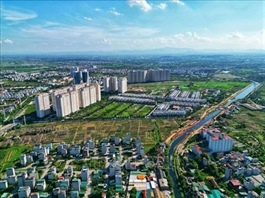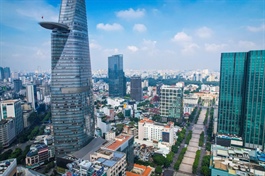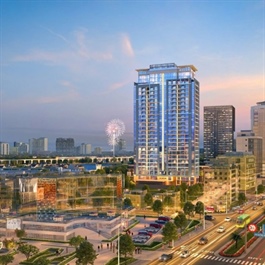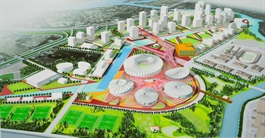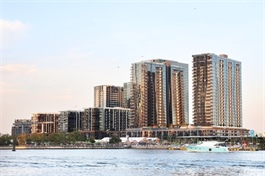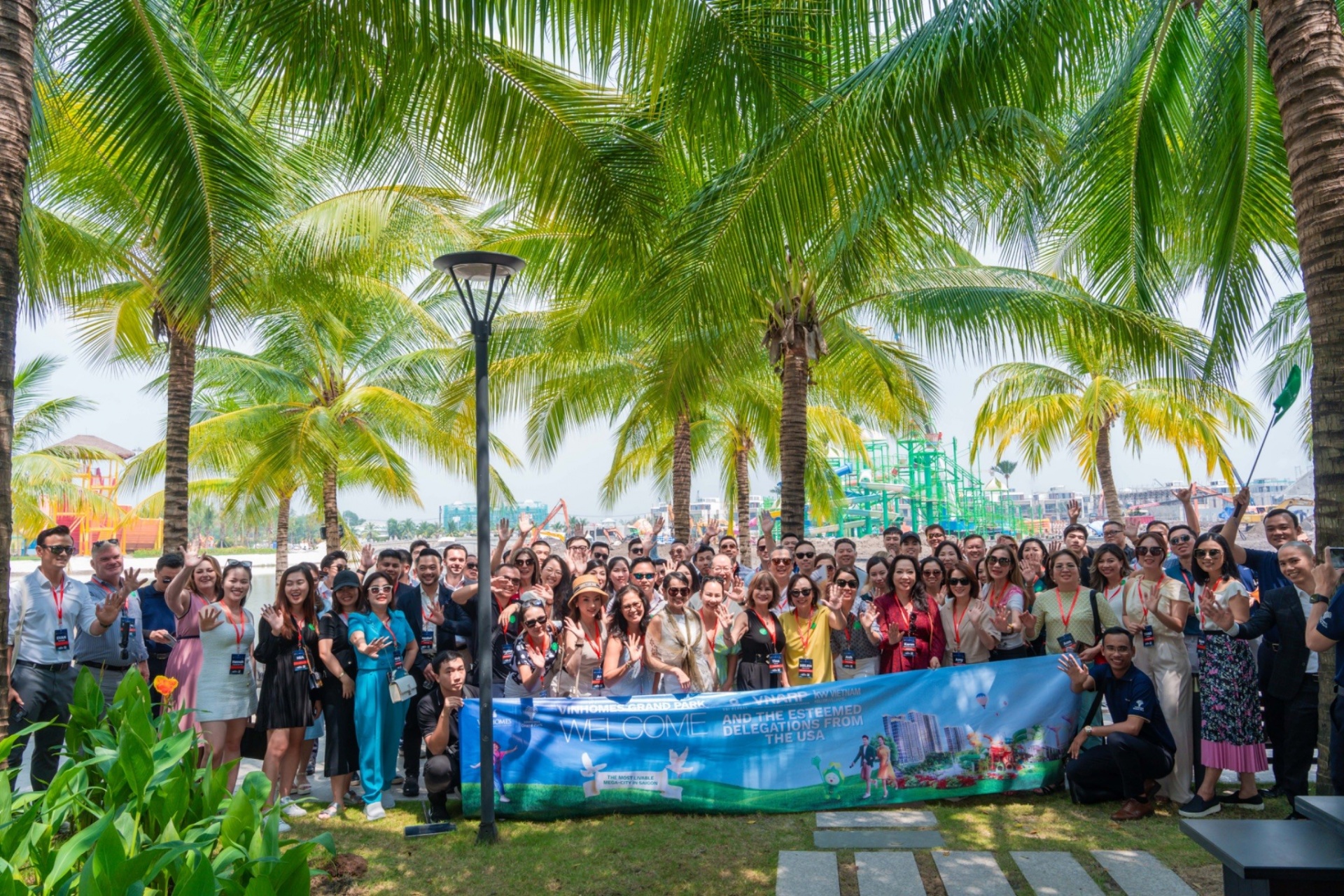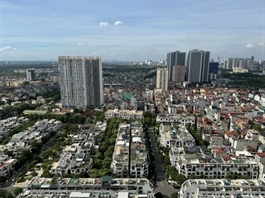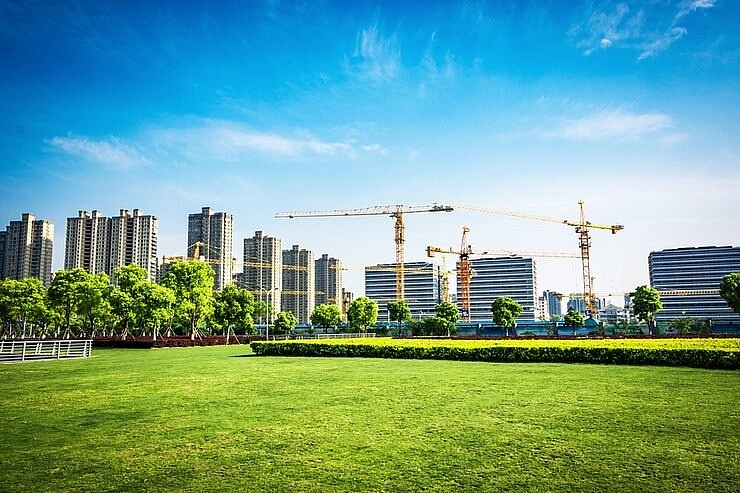Metro lines push up real estate prices
Metro lines push up real estate prices
Despite the nationwide real estate market experiencing difficulties, the apartment segment surrounding metro lines in Ho Chi Minh City and Hanoi has seen a sharp increase in prices.
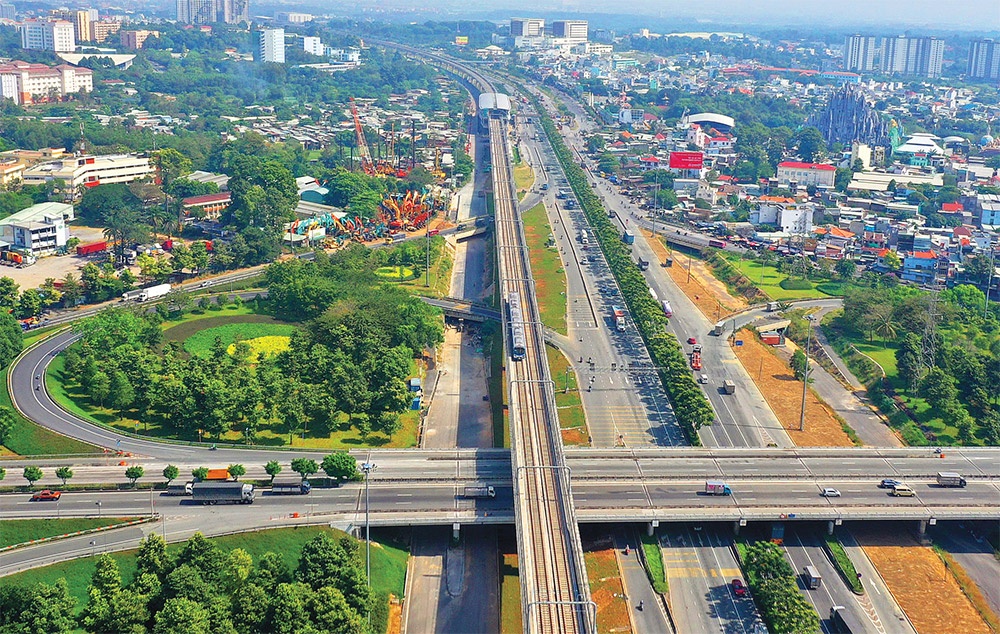
In Ho Chi Minh City, high-end apartment projects are densely concentrated along both sides of the route parallel to Hanoi Highway. Several projects have been completed, while others remain under construction, all within the high-end segment. Current selling prices range from $4,000 to over $10,000 per square metre, compared to their initial prices of $1,600 to $2,000.
For instance, the selling price of apartments at the Masteri Thao Dien project, located near the metro line in Thu Duc city, has nearly doubled to around $3,750 per square metre compared to 2015.
Similarly, along Vo Nguyen Giap Street, from the Saigon Bridge to the roundabout intersecting Mai Chi Tho Avenue, projects like Thao Dien Pearl, Lumière Riverside, Gateway Thao Dien, and Estella Heights are now priced at almost $4,200 per square metre – double their previous value.
Notably, standout projects like The Monarch in Empire City, located next to the metro line passing Ba Son Bridge, are priced between $8,000 to $10,500 per square metre.
In Hanoi, two metro lines are operational: metro line 2A and metro line 3 (phase 1) linking Nhon to Hanoi Station. According to Savills Vietnam, apartment prices in Hanoi’s Cau Giay district, within a 500-metre radius of the Cau Giay-Nhon metro stations, have increased by over 40 per cent on-year as of October last year.
Nguyen Thi Hong Van, deputy director of Valuation and Consulting at Savills Hanoi, remarked that the metro line has significantly contributed to increasing property values along its route.
“More importantly, the metro system improves the social life of city residents. It reduces traffic accidents, alleviates congestion, and helps lower environmental pollution by running on electricity, saving travel costs for commuters,” Van said.
Experts point to transit-oriented development (TOD) as an urban development model that aligns with public transportation, enhancing population density in large cities. Ho Chi Minh City is planning urban development according to this model, with a vision extending to 2060.
Dr. Huynh Thanh Dien, an economic expert, highlighted Ho Chi Minh City’s focus on combining urban development with public transportation systems, a model widely adopted in major cities globally. “This model encourages road expansion, which raises housing demand along transportation axes, promoting real estate market growth,” Dien told VIR.
Given the limited available land in Ho Chi Minh City, housing development will prioritise apartment projects near public transportation hubs. Dien pointed out that this is a lesson learned from cities worldwide.
Commenting on the reasons behind the high selling prices of apartment projects near traffic hubs, Dien explained that ease of mobility is a key driver, with residents willing to pay a premium for convenience.
“The metro is the only means of transport in large cities unaffected by traffic congestion. Its convenience motivates many people to choose to live nearby,” Dien said.
Le Hoang Chau, chairman of the Ho Chi Minh City Real Estate Association, explained that the TOD model has encouraged real estate developers to acquire land on both sides of new roads and develop large-scale projects.
“Maximising land along newly opened routes and metro stations creates a transparent business environment in auctions, attracting investors. The city can recoup its infrastructure investments and reinvest in other projects,” Chau said.
“The TOD model helps facilitate modern urban planning and boosts the real estate market’s value. Reducing travel time and costs while improving employment opportunities also increases commercial real estate values, such as offices and retail.”
Since 2016, more than 30 housing and commercial centre projects have been developed along the first metro line, Ben Thanh-Suoi Tien. Existing projects along this route have seen price increases of 15-50 per cent compared to their original selling prices within a few years.



